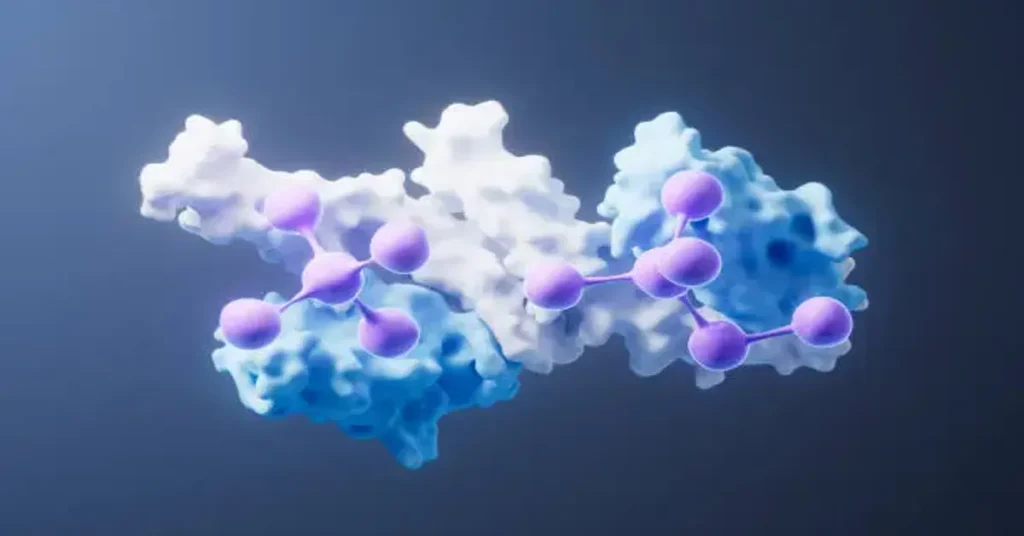When someone searches for “Hcooch ch2 h2o,” they are likely trying to understand the chemical interactions between these compounds—formic acid methyl ester (HCOOCH₃), methylene (CH₂), and water (H₂O). This search often stems from a curiosity about their chemical reactivity, industrial uses, environmental effects, or academic study in organic chemistry. In simple terms, the query suggests interest in how these three molecules might behave in a laboratory or industrial setting, either as reactants or in various transformation processes. Within the first few minutes of reading this article, the user will gain a precise understanding of these compounds, how they react individually and collectively, and the scientific significance behind their behavior.
HCOOCH₃, known as methyl formate, is an organic ester with wide applications in pharmaceuticals and manufacturing. CH₂, or methylene, is an extremely reactive and short-lived species often seen in synthetic organic chemistry. Water (H₂O), the universal solvent, is often a key player in facilitating reactions, particularly in hydrolysis, acid-base reactions, and solvating mechanisms. When these three are analyzed together, they offer valuable insights into organic synthesis, ester hydrolysis, radical reactions, and atmospheric chemistry. This article, written in an informative style inspired by the New York Times, will explore each compound, their interactions, example reactions, visual structures, comparative data tables, and modern applications in a 21st-century chemical context.
“Chemistry is not just the study of reactions, but of relationships—between molecules, environments, and innovation.” — Dr. Lillian Harper, Organic Chemist
In the following sections, readers will journey through the atomic specifics, explore reaction conditions, visualize chemical equations, and see how such compounds influence real-world products, industrial design, and environmental solutions.
A Closer Look at Each Component: Hcooch ch2 h2o
Before diving into potential reactions or interactions, it is essential to understand each molecule on its own. Let’s begin with HCOOCH₃, or methyl formate. This organic ester consists of a formyl group (HCO-) bonded to a methoxy group (OCH₃). It is commonly synthesized through the reaction of methanol and carbon monoxide in the presence of an acid catalyst. It is highly flammable and has a distinctive odor, often used as a solvent or intermediate in chemical manufacturing.
CH₂, on the other hand, is not a stable compound in free form under normal conditions. It represents a methylene group, which is a divalent carbon radical often observed in transient or reactive states. As a carbene, it is essential in organic synthesis—particularly in cyclopropanation or insertion reactions – Hcooch ch2 h2o.
Water (H₂O), perhaps the most familiar of the three, is a polar solvent essential to life and chemistry. Its structure—two hydrogen atoms covalently bonded to oxygen—allows it to dissolve polar substances, participate in hydrolysis, and stabilize charged species. When examining interactions involving these three molecules, water often acts as either a reactant in hydrolysis reactions or a medium to stabilize or propagate reaction pathways.
Chemical Structures and Basic Properties
Visualizing molecular structure helps grasp how atoms are arranged and how likely they are to interact chemically. Below is a table summarizing each compound’s core molecular traits:
| Compound | Molecular Formula | Common Name | Structural Diagram Summary | State at Room Temp | Molecular Weight (g/mol) |
|---|---|---|---|---|---|
| HCOOCH₃ | C2H4O2 | Methyl Formate | H–C(=O)–O–CH₃ | Liquid | 60.05 |
| CH₂ | CH₂ | Methylene | :CH₂ (Carbene) | Gas (Transient) | 14.03 |
| H₂O | H₂O | Water | H–O–H | Liquid | 18.02 |
These molecular identities reveal that while HCOOCH₃ and H₂O are relatively stable under ambient conditions, CH₂ is typically encountered as a fleeting intermediate, formed during high-energy reactions or photolytic cleavage. Understanding their structures sets the stage for predicting reactivity, energetics, and catalytic behavior in various systems.
HCOOCH₃ + H₂O: Ester Hydrolysis and Industrial Relevance
One of the most fundamental reactions involving methyl formate (HCOOCH₃) is acid-catalyzed hydrolysis, where water breaks the ester bond, resulting in formic acid (HCOOH) and methanol (CH₃OH). The reaction is:
HCOOCH₃ + H₂O → HCOOH + CH₃OH
This process plays a critical role in industrial organic chemistry, particularly in the synthesis of acids and alcohols. In laboratory settings, the hydrolysis is accelerated by sulfuric acid or hydrochloric acid, and the reaction proceeds through a tetrahedral intermediate formed via nucleophilic attack of water on the carbonyl carbon.
In environmental chemistry, this reaction also has implications. Methyl formate, often released in atmospheric processes or as a byproduct in industries, can undergo hydrolysis in the presence of moisture, influencing local pH and forming formic acid—an environmental irritant but also a naturally occurring compound in ant venom.
“Ester hydrolysis bridges organic synthesis with natural biodegradation—it’s chemistry echoing biology.” — Professor Nguyen Bảo Linh, Green Chemistry Advocate
This reaction is exothermic and is utilized in controlled reactor conditions where yield, temperature, and acid concentrations can be optimized for bulk formic acid production – Hcooch ch2 h2o.
CH₂ Reactions: A Short-Lived Player in Organic Transformations
Methylene (CH₂), when represented as a free carbene (:CH₂), is extremely reactive and rarely isolated in its pure form. Generated via photolysis of diazomethane or through thermolysis of diazirines, CH₂ participates in a host of insertion and cycloaddition reactions.
Some reactions of methylene include:
- Cyclopropanation: CH₂ reacts with alkenes to form cyclopropanes—important in drug development and materials science.
- Insertion into C–H bonds: A highly sought-after reaction in synthetic chemistry, though difficult to control due to CH₂’s reactivity.
- Formation of extended alkenes or polymeric chains in gas-phase reactions with other hydrocarbons or radicals.
While CH₂ doesn’t directly react with methyl formate or water under standard conditions, its presence in reaction mechanisms—especially radical polymerization or UV-induced breakdown of esters—cannot be ignored. Researchers have proposed potential interactions between CH₂ and esters like HCOOCH₃ in atmospheric photochemistry.
Read: Chóim24h: The Growing Digital Gateway for Real-Time Information and Community Updates
Table: Potential Reactions Involving HCOOCH₃, CH₂, and H₂O
| Reaction Type | Reactants Involved | Conditions Required | Products Formed | Notes |
|---|---|---|---|---|
| Acid-catalyzed Hydrolysis | HCOOCH₃ + H₂O | Acid, Heat | HCOOH + CH₃OH | Common industrial method |
| UV-induced Carbene Insertion | CH₂ + Alkene | UV Light, Photolysis | Cyclopropane Derivatives | Involves :CH₂ as a transition state |
| Radical Ester Fragmentation | HCOOCH₃ + :CH₂ | Radical initiator, Heat | CO, CH₄, HCO• | Observed in combustion chemistry |
| Environmental Hydrolysis | HCOOCH₃ + H₂O (ambient) | Ambient Air, Moisture | Minor Formic Acid Release | Contributes to natural decay |
| Nucleophilic Water Attack | CH₂ (in resonance with solvent) | Solvent polarity, High energy | Polymer backbones or complex radicals | Limited in lab conditions |
This table reinforces the limited but contextually significant scenarios where these three compounds intersect in chemical pathways. Most real-world uses stem from methyl formate’s reactivity and water’s solvent or hydrolytic properties, while methylene adds an advanced, theoretical angle for researchers.
Applications in Industry: From Fuel Additives to Green Chemistry
The trio of compounds—HCOOCH₃, CH₂, and H₂O—also finds representation in multiple industries, from fuel manufacturing to green solvent applications. Methyl formate, for instance, is explored as a low-boiling, low-toxicity blowing agent in the production of polyurethane foams. When it degrades, the byproducts—formic acid and methanol—are easily biodegradable, making it a preferred alternative in sustainable production processes.
Methylene, although fleeting, inspires innovations in synthetic routes for pharmaceuticals. Scientists aim to stabilize methylene equivalents through protective intermediates, allowing precise insertions that are otherwise difficult with traditional reagents – Hcooch ch2 h2o.
Water, in this context, serves dual purposes:
- As a reactant in hydrolysis or condensation reactions.
- As a green solvent, replacing hazardous organics in reaction vessels.
Together, these molecules showcase the modern intersection of chemistry, sustainability, and technology. Their use is governed not only by reactivity but also by regulatory, environmental, and economic considerations.
Environmental Impacts and Safety Considerations
The chemistry of these compounds, especially under industrial scaling, must be managed carefully due to their environmental interactions. HCOOCH₃, for instance, is flammable and moderately toxic in high concentrations. Proper handling protocols, including ventilation and flame avoidance, are necessary during storage and transport.
Methylene’s radical behavior, while not directly hazardous due to its short lifespan, poses risks in synthetic setups if not controlled with inert gases or quenched appropriately. Accidental release of diazomethane, a common methylene precursor, can be explosive.
Water, while generally safe, facilitates the mobility of these chemicals in the environment. When methyl formate spills into moist soil or waterways, it can hydrolyze, releasing formic acid, which in excess contributes to acidity and ecological stress – Hcooch ch2 h2o.
Green chemistry advocates push for:
- Substitution with less volatile esters.
- Enzyme-catalyzed hydrolysis instead of acid-driven.
- Computational modeling to predict methylene reaction outcomes before lab synthesis.
“The future of chemistry is not just efficient reactions, but ethical ones.” — Dr. Yusuf Halim, Environmental Chemist
Conclusion
The search for “HCOOCH CH₂ H₂O” uncovers a rich tapestry of chemical interactions that span laboratory science, industrial processes, environmental dynamics, and academic curiosity. Methyl formate (HCOOCH₃) stands as a versatile compound with tangible utility in hydrolysis, solvent design, and green manufacturing. Methylene (CH₂), though abstract in its free form, reveals a universe of reactive potential that inspires new synthetic strategies. Water (H₂O), ever the silent partner, facilitates, accelerates, and sometimes controls the entire stage of reactivity.
Together, these molecules form more than a chemical equation—they reflect the evolving language of modern science. Whether you’re a chemist aiming to design cleaner production lines, a student decoding reaction mechanisms, or a policymaker examining chemical safety, understanding these compounds in their singular and combined capacities offers an illuminating view into the elegant logic of chemistry.
5 Detailed FAQs
Q1: What happens when HCOOCH₃ and H₂O react?
They undergo acid-catalyzed hydrolysis to produce formic acid (HCOOH) and methanol (CH₃OH), commonly used in industry.
Q2: Is CH₂ a stable compound?
No, CH₂ or methylene is highly reactive and usually exists briefly as a carbene intermediate in organic reactions.
Q3: Can HCOOCH₃ and CH₂ react directly?
Not under normal conditions. However, in high-energy environments, CH₂ might insert into bonds within methyl formate, forming fragments.
Q4: What safety concerns exist with these compounds?
Methyl formate is flammable, methylene is reactive and dangerous in gas form, and hydrolysis byproducts can be mildly corrosive.
Q5: Where are these compounds commonly used?
HCOOCH₃ is used in foam production and solvents, CH₂ in synthetic chemistry, and H₂O as a reaction medium and hydrolytic agent.






